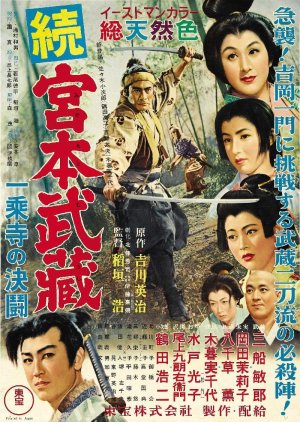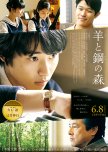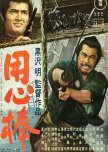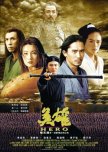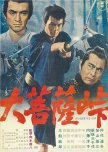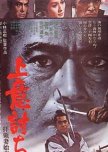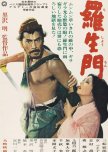
Questa recensione può contenere spoiler
"Swordsmanship means right-mindedness"
Samurai II: Duel at Ichijoji Temple continues the story of Miyamoto Musashi from the first film. Where a young Takezo/Musashi spent much of the time in the first one running around in the woods with angry villagers chasing him, this time he spends a lot of time evading ambushes by a school of samurais that are offended that this nameless swordsman can soundly beat any of them. He also has the two women who loved him from the first film hot on his trail. What's a swordsman to do?True to his word, Musashi wanders the countryside in order to hone his skills. He duels a man with a chain and scythe, defeating him easily. A monk watching the duel tells him he's too strong and that a man's strength is not forever. To become a true samurai he must learn chivalry as well. Musashi puts a pin in that and takes on the Yoshioka School demanding a duel with the young master of the house. The samurai in the school don't think their master is up to it and seek opportunities to ambush the unknown swordsman.
Meanwhile, the characters from the previous film have moved on. Otsu has gone back to the temple forlorn over Musashi choosing the sword over her. Akemi is working as an entertainer for men, with her mom pimping her out. Her mom, Oko, now married to Musashi's friend Matahachi is cheating on him and waiting for the chance to sell her daughter and ditch him. Akemi still pines for Musashi but is being courted hard by Sasaki, another gifted swordsman. And of course, Matahachi's mom is still crying out for Musashi's blood even after she literally bumps into her ne'er-do-well son. Just for good measure she adds Otsu onto her blood list.
Some battles are better than others as we aren't always shown the end of the fights, only the deadly outcomes. Many fights are at dawn or at night, filmed in the day to look like night which can make the action hard to see. The final battle shows Mifune's fiery fury as he battles 80 samurai, having to use strategy as well as his sword. He also learns much to the priest Takuan's delight when to beat a hasty retreat. Even after treachery and blood lust, the future noble fighter, writer, and artist learns compassion or at least chivalry. He also renounces women. With the crazy ones in his life, might not have been a bad idea.
Mifune Toshiro truly made this character come alive with a wide variety of emotions. His energy and charisma are hard to resist watching. Godzilla's Hirata had few scenes, but the terror in eyes facing Musashi was greater than when facing the Big G. Once again, the women were portrayed in typical 1950's sexist fashion. They were dangerously jealous, short-sighted, obsessive, liars, and emotionally unstable all around. Throw in murderous as well. And then there was Akemi's mother who sat idly by while her daughter was raped so that she could profit off her. Not a good apple in the whole feminine basket.
Though there weren't as many scenic outdoor scenes as the first film, there were still enough to satisfy most viewers. The indoor and outdoor sets varied as to how well they came across. Some were quite realistic and others might be found on a theater's stage.
Samurai II was a more compelling film than the first with more dire consequences and challenges for a majority of the characters. I look forwarding to watching the final installment to see how Musashi transforms on his walk to become a better swordsman and more mindful person. And whether in all the spiritual enlightenment he receives he learns how to take a woman's rejection better.
3/8/23
Questa recensione ti è stata utile?

